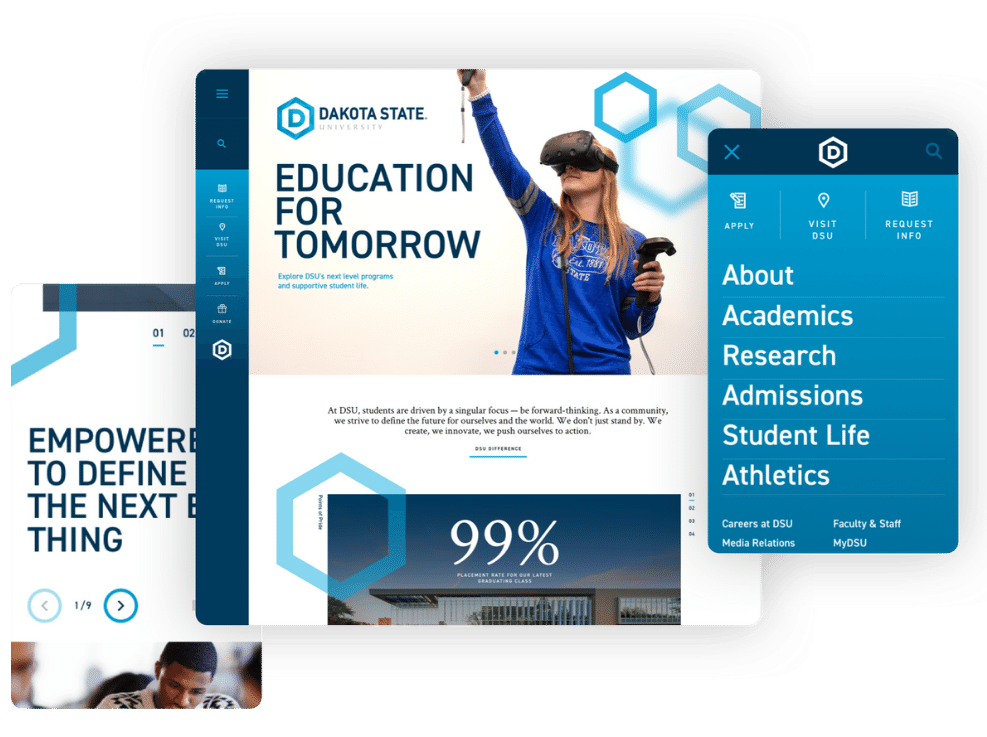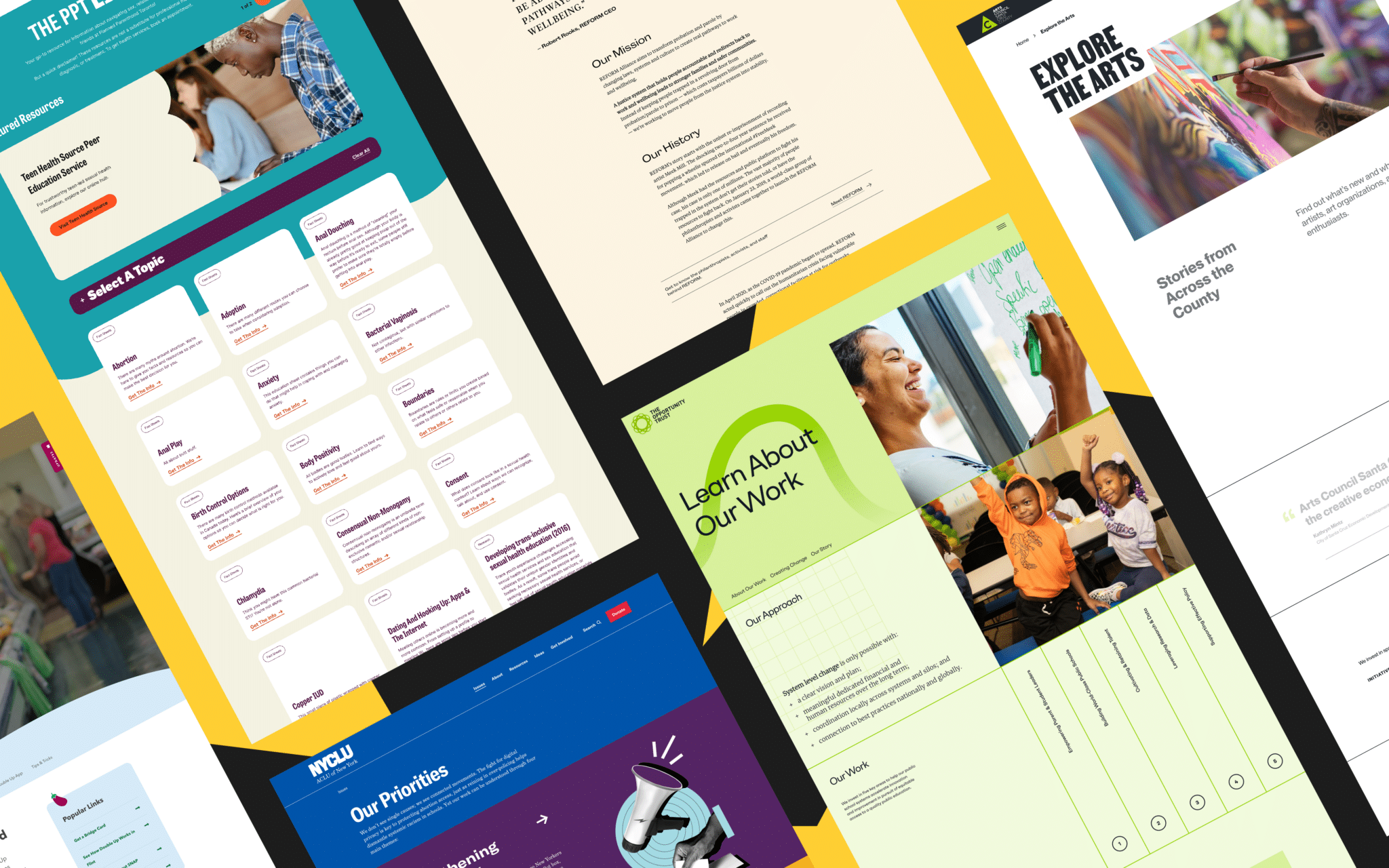Discover the Latest Trends in Website Design in copyright for 2024
Discover the Latest Trends in Website Design in copyright for 2024
Blog Article
Increase Involvement With Cutting-edge Web Site Design Solutions
An attentively crafted user experience, underpinned by critical visual layout and interactive aspects, can substantially enhance customer interaction. By exploring different approaches such as responsive style and customized content, organizations can develop a platform that not just mesmerizes users but likewise promotes lasting commitment.
Understanding Customer Experience
Understanding customer experience (UX) is critical for producing reliable web site layout options, as it directly affects how individuals interact with electronic platforms. A thorough UX method includes numerous elements, including usability, availability, and user contentment, all of which add to the general efficiency of an internet site.
To start with, functionality focuses on how easily users can browse and locate the information they look for. Access guarantees that all individuals, consisting of those with impairments, can successfully connect with the website.
Moreover, recognizing user identities is necessary for customizing the experience to meet certain target market requirements. By conducting user study and testing, designers can gather insights that notify design choices, guaranteeing the website not only meets aesthetic goals yet additionally satisfies functional demands. Ultimately, a thoughtful strategy to UX style fosters involvement, motivates retention, and enhances general user complete satisfaction, which are vital for the success of any type of digital platform.
Visual Layout Approaches
Including reliable aesthetic style techniques is important for capturing customer focus and enhancing the total individual experience on a web site. A well-balanced aesthetic pecking order guides users with the content, allowing them to easily navigate and absorb information. This can be accomplished through the critical use typography, color design, and spacing, which jointly create a natural and interesting format.
Color plays a critical duty in establishing and stimulating emotions brand identification. Making use of a balanced shade scheme that lines up with the brand name's ethos can foster familiarity and count on. In addition, including high-quality pictures and graphics boosts visual appeal and can considerably boost user engagement.
Whitespace, usually ignored, is equally vital as it permits web content to take a breath and stops frustrating customers with clutter. It assists in simpler analysis and understanding, bring about a much more satisfying searching experience.

Interactive Elements for Engagement

One secret facet of interactive layout is personalization. Customizing experiences based upon user actions and preferences can significantly enhance involvement. As an example, tailored content suggestions or vibrant user interfaces that adjust to specific selections produce a sense of possession and importance, motivating users to explore further.
Gamification is another powerful strategy. Including game-like components, such as success or incentives for finishing jobs, can transform mundane interactions right into delightful experiences. This technique not only enhances interaction but additionally encourages individuals to return, creating a devoted audience.
Moreover, interactive components can assist in social sharing, enhancing an internet site's reach. Features like remark sections, share buttons, and user-generated web content areas foster area interaction, turning site visitors into energetic participants (website design copyright). sites Inevitably, the calculated use interactive aspects is important for developing a compelling and appealing internet site that resonates with individuals
Receptive and Adaptive Design
A properly designed internet site should focus on flexible this post and receptive style to guarantee optimum user experiences across a range of devices and screen sizes. Receptive design utilizes liquid grids and adaptable images, enabling the design to instantly adjust based on the visitor's screen size. This method makes certain that customers can quickly navigate and engage with the material, no matter of whether they are utilizing a tablet computer, smartphone, or desktop .
On the other hand, flexible style uses predefined designs that are tailored to details gadget groups. This suggests that the internet site spots the sort of device being used and offers the proper design, which can improve loading times and optimize the display of essential components. While both strategies intend to enhance usability, responsive layout is usually preferred for its fluidness and seamless shift between gadgets.
Integrating flexible and responsive design not only improves customer fulfillment yet also positively influences online search engine positions. Browse engines prioritize mobile-friendly websites, therefore increasing presence and bring in more site visitors. Spending in these design approaches is important for companies looking to involve their target market properly and preserve a competitive side in today's digital landscape.
Studying Individual Comments and Data

Evaluating metrics such as bounce prices, time on web page, and click-through prices offers a measurable perspective on customer engagement. These metrics assist developers determine which web content resonates and which locations may call for optimization. In addition, A/B testing can be employed to evaluate variants in style, permitting his response developers to make enlightened decisions based upon user communications.
Including customer feedback not just improves website functionality yet also fosters a sense of neighborhood and depend on. Engaging with users with comments loopholes cultivates loyalty and urges repeat check outs. Inevitably, leveraging customer comments and data analysis is essential to producing a dynamic, user-centered web site that adapts to developing individual needs and preferences, thereby driving higher engagement and fulfillment.
Verdict
In verdict, ingenious site design solutions significantly boost customer interaction by prioritizing customer experience, utilizing effective aesthetic methods, and integrating interactive elements. The execution of responsive and adaptive design makes certain accessibility across various devices, better cultivating individual interaction. Constant analysis of individual comments and data promotes continuous improvements, leading to continual satisfaction and commitment. Ultimately, the merging of these design concepts cultivates an engaging on-line atmosphere, vital for driving long-term customer engagement and dedication.
A thoughtfully crafted individual experience, underpinned by strategic visual layout and interactive components, can significantly enhance individual involvement.Incorporating efficient visual style methods is necessary for recording customer interest and boosting the total customer experience on an internet site.User feedback and data analysis are essential components of effective site design, as they offer important insights into user behavior and choices. Inevitably, leveraging customer responses and information evaluation is important to developing a vibrant, user-centered internet site that adjusts to advancing user needs and preferences, therefore driving higher interaction and satisfaction.
In conclusion, innovative site style options dramatically improve individual interaction by prioritizing customer experience, using efficient visual strategies, and incorporating interactive elements.
Report this page